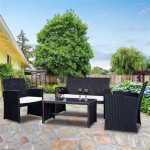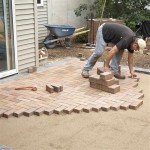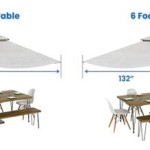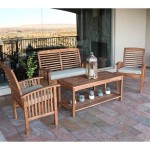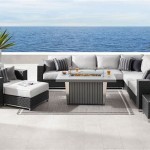Patio Door Curtain Rods Without Center Bracket: A Comprehensive Guide
Patio doors offer expansive views and abundant natural light, making them a desirable feature in many homes. However, effectively controlling light, ensuring privacy, and enhancing the aesthetic appeal of these large openings often necessitates the use of curtains. Traditional curtain rods, particularly those designed for wider spans, commonly incorporate a center support bracket to prevent sagging and maintain stability. This bracket, however, can impede the smooth operation of curtains, especially when drawing them across the entire width of the door. This article explores the alternative: patio door curtain rods designed to function effectively without a center bracket.
The absence of a center bracket allows for uninterrupted curtain movement, facilitating easier opening and closing. This is especially beneficial for frequently used patio doors where convenience is paramount. While a center bracket provides added stability, advances in materials and design have made it possible to achieve sufficient support without this traditionally necessary component. Understanding the factors contributing to the success of bracketless patio door curtain rods is essential for making an informed purchasing decision.
Several factors influence the suitability of a curtain rod lacking a center support for a patio door. These include the material of the rod, the diameter of the rod, the weight of the curtains to be hung, and the method of installation. A careful assessment of these elements is critical to ensure the chosen rod will perform its intended function effectively over time, preventing sagging and maintaining the desired aesthetic.
The following sections will delve into the various aspects of patio door curtain rods without center brackets, examining material choices, design considerations, installation techniques, and strategies for selecting the appropriate rod for specific needs. By understanding these fundamentals, homeowners and designers can make well-informed choices that balance functionality, aesthetics, and long-term durability.
Material Selection: The Foundation of a Stable System
The material from which a patio door curtain rod is constructed plays a pivotal role in its ability to function without a center bracket. Different materials offer varying degrees of strength, rigidity, and resistance to bending under load. The most common materials used in bracketless curtain rods are steel, aluminum, and, less frequently, wood.
Steel is generally considered the strongest and most durable option. Its inherent strength allows for longer spans without significant sagging, even when supporting heavier curtains. Steel rods are typically coated with a protective finish, such as paint or powder coating, to prevent rust and corrosion. The downside of steel is its weight, which can make installation more challenging, particularly for longer rods.
Aluminum is a lightweight alternative to steel, offering a good balance of strength and ease of handling. Aluminum rods are naturally resistant to corrosion, making them suitable for use in areas with high humidity or near coastal environments. While not as strong as steel, aluminum can still support moderate curtain weights, especially when used in conjunction with a thicker rod diameter. The cost of aluminum is typically higher than steel.
Wood is occasionally used for curtain rods but is generally less suitable for bracketless applications, especially for wider patio doors. Wood is more prone to bending and warping over time, particularly under the weight of heavy curtains. While wood can be aesthetically pleasing, its structural limitations make it a less reliable choice than steel or aluminum for bracketless patio door curtain rods. If wood is chosen, a hardwood variety is preferable, and the rod diameter should be significantly larger than that of a metal rod.
In addition to the primary rod material, the material used for the mounting hardware is also crucial. Steel or heavy-duty aluminum brackets are recommended to provide secure and stable support points for the rod. The mounting hardware should be capable of withstanding the weight of the curtains and the stresses placed on the rod during opening and closing. The type of wall to which the brackets are attached also influences the choice of mounting hardware; drywall requires different anchors than concrete or wood framing.
Diameter and Design: Maximizing Strength and Minimizing Sag
The diameter of the curtain rod is directly related to its resistance to bending. A larger diameter rod will generally be stronger and less prone to sagging than a smaller diameter rod of the same material. This is particularly important for bracketless patio door curtain rods, where the entire weight of the curtains is supported by the end brackets alone.
For steel rods, a diameter of at least 1 inch is recommended for spans exceeding 6 feet. For aluminum rods, a diameter of 1.25 inches or greater may be necessary for similar spans. The specific diameter required will depend on the weight of the curtains and the overall length of the rod. It is always advisable to err on the side of caution and choose a larger diameter rod if there is any doubt about its load-bearing capacity.
The design of the rod itself can also contribute to its strength. Telescoping rods, which consist of two or more sections that slide into each other, are generally less stable than solid rods. The joints between the sections create weak points that are more susceptible to bending. For bracketless applications, a single, solid rod is preferable.
Another design consideration is the presence of internal reinforcement. Some curtain rods are designed with internal ribs or supports that add strength and rigidity without increasing the overall diameter. These features can be particularly beneficial for longer rods that need to support heavier curtains. However, such rods are often more expensive.
The end caps or finials attached to the curtain rod also play a role in its stability. Larger and heavier finials can add extra weight to the ends of the rod, increasing the stress on the brackets. Choosing lighter-weight finials can help to minimize this stress. If heavier finials are desired, it is important to ensure that the mounting hardware is strong enough to support the additional weight.
Installation Techniques: Ensuring Stability and Preventing Failure
Proper installation is paramount to the successful operation of a bracketless patio door curtain rod. Even the strongest rod will fail if it is not installed correctly. The mounting brackets must be securely attached to the wall, and the rod must be properly seated within the brackets.
Before beginning the installation process, it is essential to locate the wall studs. Wall studs are the vertical framing members that provide structural support for the walls. Mounting the brackets directly into the studs will provide the most secure and stable attachment. A stud finder can be used to locate the studs behind the drywall.
If it is not possible to mount the brackets directly into the studs, heavy-duty drywall anchors must be used. Drywall anchors are designed to provide a secure attachment to drywall without the need for a stud. There are many different types of drywall anchors available, each with its own load-bearing capacity. It is important to choose anchors that are rated for the weight of the curtains and the curtain rod.
The brackets should be installed at the proper height and distance from the top of the door frame. The height will depend on the desired length of the curtains, while the distance from the top of the door frame will depend on the size and style of the brackets. It is important to measure carefully and ensure that the brackets are level before attaching them to the wall.
Once the brackets are installed, the curtain rod can be placed into the brackets. The rod should fit snugly into the brackets without any excessive play. If the rod is too loose, shims can be used to fill the gap. The brackets should be tightened securely to prevent the rod from slipping or falling out.
After the rod is installed, the curtains can be hung. It is important to distribute the weight of the curtains evenly across the rod. This can be achieved by using evenly spaced curtain rings or hooks. Avoid concentrating the weight of the curtains in one area, as this can overload the rod and cause it to sag.
Regularly inspecting the installation is also important. Check the mounting brackets and anchors to ensure they remain secure and that the rod is not showing signs of sagging. Tighten any loose screws or replace worn anchors as needed. Performing regular maintenance will help to ensure the long-term stability and functionality of the bracketless patio door curtain rod.
Choosing curtains that are appropriate for the capabilities of the rod is also important. Very heavy, lined blackout curtains will place significantly more stress on the rod than lightweight sheer curtains. If heavier curtains are desired, a stronger rod with a larger diameter and robust mounting hardware should be selected.
In summary, installing a patio door curtain rod without a center bracket requires careful consideration of materials, design, and installation techniques. By selecting a strong and durable rod, using appropriate mounting hardware, and following proper installation procedures, it is possible to achieve a stable and aesthetically pleasing curtain solution that eliminates the need for a potentially obstructive center support.

Diy Patio Curtain Rod Without Center Bracket Sliding Glass Door Curtains Coverings

Great Curtain Rod Options For Patio Doors Designer Drapery Hardware

How To Hang Curtains Without Center Support 3 Methods
Bonnieprojects Extra Long And Curtain Rod

How To Hang Curtains Without Center Support 3 Methods

Custom Curtain Rod With No Middle Bracket Sliding Glass Door Curtains Best Doors

Curtain Rods From Galvanized Pipes Without The Industrial Look

What S The Best Curtain Rod For A Sliding Glass Door Design Morsels

What S The Best Curtain Rod For A Sliding Glass Door Design Morsels

Curtain Rods For Sliding Glass Door Drapery Direct


